India’s diverse topography, soil types, and climate account for its rich floral history, where you can find numerous flowering plants with varying blooming seasons.
Some typical examples of 365 days flowering plants in India are listed below based on their growing months.
In this blog, you can understand what flowering plant to choose for your garden that can grow and produce flowers for the following year. The additional uniqueness is that you can quickly grow these plants in pots and place them on your balcony.
365 days flowering plants in India with Names
1. Milli:
Milli is also called the crown of thorns.
This plant requires less water and direct sunlight.
Other names of this plant are Christ plant, christ thorn.
Native of the flower is Madagascar.
The entire plant body is full of thorns.
You can use this plant for ornamental purposes.

2. Adenium:
The common name of Adenim is desert rose.
A distinctive feature of adenium is they grow as swollen trunks. This plant conserves the water in the trunk portion to survive during drought.
The bulge portion of the stem indicates the healthiness of the plant.
Desert rose has a lifespan of 500 years.
The blooming of flowers starts from 7-8 months after sowing.

3. Lantana:
Lantana requires slightly acidic soil mulching with pine needles can be done to increase acidity in the soil.
The flower of the plants attracts butterflies, hummingbirds, and insect pollinators; this helps in natural pollination.
The leaf of the lantana plant might cause some mild skin irritation.
The plant likes full sunlight; they require at least 6 hours of direct sunlight every day.

4. Kalanchoe:
Looking for colorful 365 days flowering plants in India for your home then Kalanchoe can be a great plant.
The complete lifespan of the kalanchoe is 6-7 years; if you take care of the plant with proper nutrients and water, it can last a few more years.
For six weeks, the plant will be in dormant mode, so move the plant to sunlight and water after six weeks.
Give the plant sunlight in the winter season to expect blooming.
When the soil around the plant is dry, then watering can be done.
To grow healthy, the plant requires sufficient sunlight.
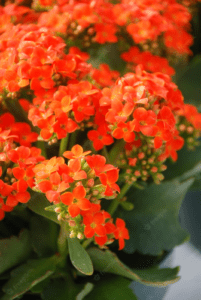
5. Ixora:
The other name of Ixora is red thechi or West Indian Jasmine.
The flowers of the plant give positive energy and good fortune. Most people grow this plant at the entrance as a sign of good luck.
The color of the flowers is red, yellow, white, and orange; they look like a large cluster of puff balls.
Water the plants when the soil is dry in summer and give less water during winter.

6. Rose:
The rose family has more than 150 species and more than a thousand hybrids.
It is a mandatory plant in every garden; it blooms the entire year.
President Ronald declared the rose as the national flower on 20th November 1986.
The rose covers all colors, including black.

7. Bougainvillea:
The flower blooms from November to May. The people in Kerala grow this flowering plant because of its attractive colors.
These plants give a pleasant vibe when they look at the wall of the house.
Flower plants look precisely like thin paper, also called paper flowers.
The healthy plant will bloom for up to five weeks.
Bougainvillaea is mainly grown by cuttings, rarely from seeds.

8. Hibiscus:
Hibiscus mainly blooms in August; the blooming happens around four weeks.
Give Miracle-gro in the early stages of planting to increase the flower blooming.
The tea prepared from the flowers is prevalent and helps reduce weight and burn belly fat.
9. Tiobouchina:
This tiobouchina has other names like princess flower and glory bush.
After flowering, light pruning is necessary to maintain a dense shape.
Tiobouchina attracts butterflies and attracts birds.
If the plant doesn’t receive enough sunlight, it will not flower properly.
Stems are vine-type; they grow up to 15 feet, so pruning is often needed.
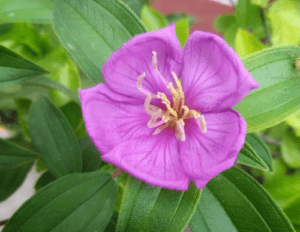
10. Crossandra:
This plant is versatile; it grows annually and perennially depending on the location.
It has another name, firecracker flower or low flame.
People in Kerala and Tamilnadu mainly use Cassandra for adorn and hairdo for functions because of its beautiful, attractive color.
The flower extracts are used for fever, headache, and wound healing.
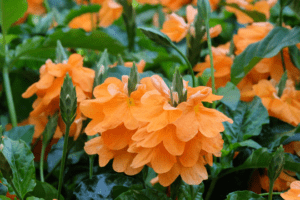
11. Phlox:
People mainly find this plant in North America.
Phlox Drummondii grows as an annual plant; most phlox species are perennial.
This plant grows in garden soil, but it should be well drained.
Phlox is of two varieties shorter and taller.
Plant shorter varieties in the front row and taller varieties in the back or middle rows.
12. Night Jasmine:
Night Jasmine is one of the best 365 days flowering plants in India that can be planted in pots. This is not an actual jasmine plant but one of the family members.
Night jasmine oil is used in Ayurveda for aromatherapy to reduce stress and anxiety.
The plant’s smell increases the serotonin level in the brain and regulates good mood.
This plant grows well in partial sunlight.

13. Clitoria ternata:
The word Clitoria is from the Latin word.
All the plant parts are edible flowers, leaves, young shoots, and tender pods commonly consumed.
FDA approves butterfly pea flower extracts.
Blue tea made from flowers has more benefits than green tea.
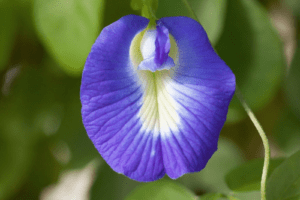
14. Snapdragon:
Snapdragon flowers mostly bloom in full sun to partial shade.
These are perennial plants; most propagation happens through cuttings, root division, and seeds.
There is an excellent technique to increase flower blooming in snapdragons that are pinching.
After the pods got dried, pinching increased the flowering.

15. Bougainvillaea:
The stunning beauty of Bougainvillea emphasizes beauty and passion.
These plants can be grown both in winter and summer.

16. Crepe jasmine:
Crepe jasmine’s other names are pinwheel flower, moonbeam, and coffee rose.
The plant’s root is used for medicinal purposes to treat hypertension, headaches, and toothaches.
Because of its fragrance, it is called Jasmine.
Jasminium sambac is edible; all other jasmine species are poisonous.

17. Orange trumpet creeper:
Campus radicus is also called trumpet vine and cow itch.
Some call it cow itch because some experience itchiness when touching the leaves of the plant.
The flower extract is used for many medicinal purposes, like menstrual disorders, injuries, and difficulty in urination.
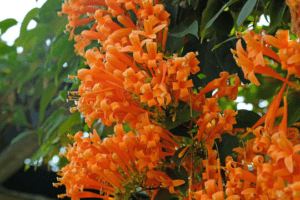
18. Gerbera daisy:
The flowering plant will be vast and beautiful with vivid colors.
This flower is used as an ornamental plant everywhere, like in bouquets and functional decorations.
Gerbera propagation method is by cuttings and seedlings.
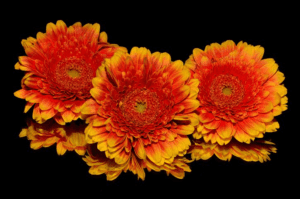
19. Coneflower:
Coneflowers are used as cut flowers.
These flowers are of various colors, like red, pink, and yellow.
Coneflowers are highly drought-tolerant plants.
They attract butterflies and birds.
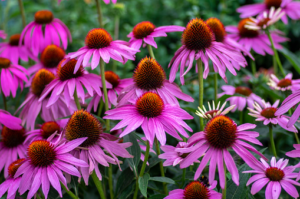
Frequently asked questions:
What are the daily flowering plants for pooja?
You can grow the following flowering plants for pooja and daily rituals
- Jasmine
- Hibiscus
- Marigold
- Crossandra
- Mogra
- Tuberose
- Chrysanthemum
- Rose
- Magnolia
- lotus
What are the 365 days of indoor flowering plants in India?
Some popular indoor flowering plants in India are as follows
- Anthurium
- Peace lily
- Orchid
- Jade plants
- Ficus
- Gerbera daisy
- Spider plant
- Chrysanthemum
- Calathea
- poinsettia
